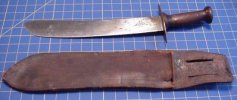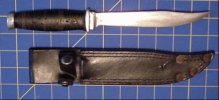not2sharp
Platinum Member
- Joined
- Jun 29, 1999
- Messages
- 20,569
Theater knives or radar knives, are a fun area. These are generally knives that would have been made by troops while on deployment in theater. They were also often made by family members for the departing soldier. But in general these are a mysterious knives, made by amateurs, for which we have little or no information. Quality is often rough, but many show real creativity and promise; the kind of thing a future master smith might make as a teenager, and if they saw actual combat, it is a good bet that they worked well as knives despite their appearance. There is nothing like a cool theater knife to spark the imagination. So let’s share some of our favorites.
n2s
n2s
Last edited:






